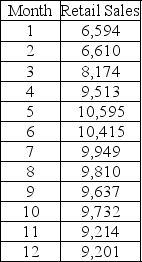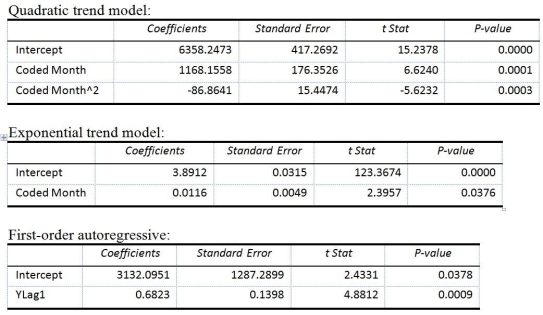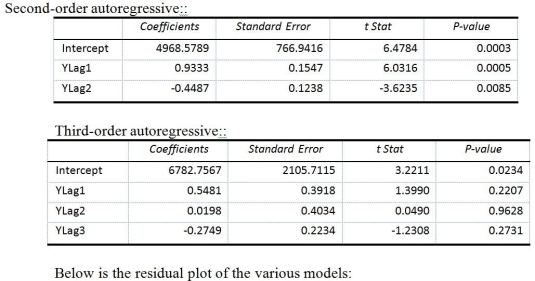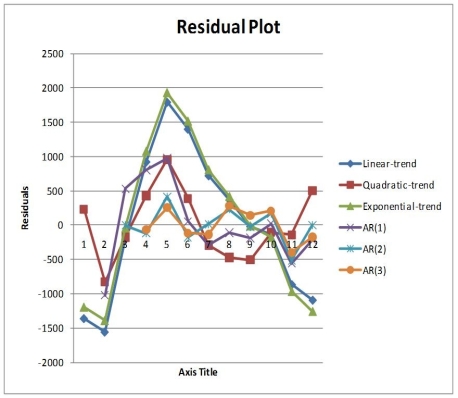TABLE 16-13
Given below is the monthly time-series data for U.S. retail sales of building materials over a specific year.

The results of the linear trend, quadratic trend, exponential trend, first-order autoregressive, second-order autoregressive and third-order autoregressive model are presented below in which the coded month for the first month is 0:




-Referring to Table 16-13, you can reject the null hypothesis for testing the appropriateness of the second-order autoregressive model at the 5% level of significance.
Definitions:
Economic Recovery
A phase in which an economy rebounds from a recession, marked by an increase in employment, consumer spending, and overall economic growth.
Reasoning Method
A logical approach used to deduce or infer information based on given premises or evidence.
Logical Appeal
A persuasive technique that uses reason and evidence to support an argument or claim.
Company Turnaround
The process of recovering a company from poor performance and financial distress to a stable and profitable state.
Q5: Referring to Table 16-12, the best interpretation
Q18: Referring to Table 17-3, suppose the analyst
Q27: Referring to 14-16, the 0 to 60
Q46: Referring to Table 9-3, if you select
Q58: Referring to Table 14-15, the alternative hypothesis
Q134: One of the reasons that a correction
Q289: Using the Cook's distance statistic Dᵢ to
Q294: Referring to Table 19-5, what is the
Q300: Referring to Table 14-8, the value of
Q312: Referring to Table 19-2, what is the